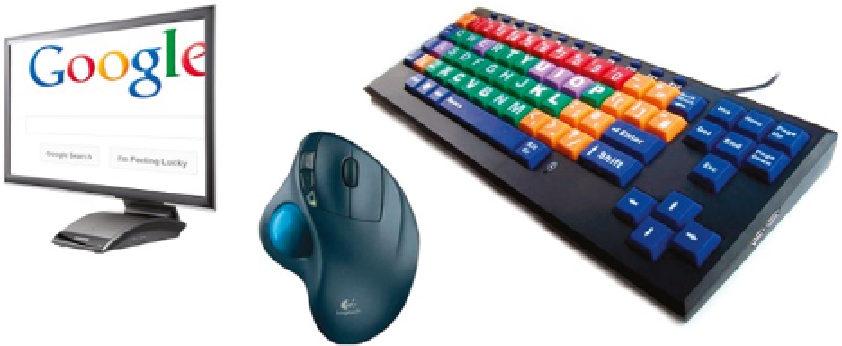HTML and CSS Reference
In-Depth Information
While the brightly contrasting colored strips on the steps of buses provide improved visibility for the visually
impaired, such strips can be useful to other people too (for example, in poor light conditions or when someone
is in a hurry). Many ramps might be useful not only for people in a wheelchair but also for parents with children,
skateboarders, in-line skaters, or people moving heavy goods. Similarly, the improved accessibility of web content is
useful not only for people with disabilities but for any user in general. For example, web accessibility contributes to a
higher level of user experience in mobile browsing, and mobile devices are used by everybody, not only people with
disabilities.
There are several software tools and hardware devices used by people with disabilities for web browsing (and
using the computer in general). Such tools and devices are referred to as
Assistive Technology
(AT).
1
This umbrella
term covers screen readers, screen magnifiers, switch mechanisms, alternative and adaptive keyboards such as large
key keyboards with simplified keyboard layout and approximately four times bigger (and often colored) keys than
the keys on standard keyboards, high-contrast keyboards, keysets (chorded keyboards), keyboards with mousepads
or keyguards, trackballs, mouthsticks, handsticks (keyboard aids, type aids), head pointers (head wands), and so on
(Figure
10-1
).
Figure 10-1.
Examples for assistive technology
According to the 2010 World Standards Day Message, at least 650 million people around the world are affected
by some kind of disability, and accessibility is not only an issue for the elderly or disabled. Anybody at any stage in life
might experience temporarily reduced accessibility [7].
In contrast to the common misbelief, web accessibility authors address much more than just visual impairment.
Many people have motor, mobility, auditory, or cognitive problems. The Web is just as, if not more, important to
people with disabilities than it is to anyone. The reason is that the Web provides access to services and/or information
that cannot be obtained easily without it (for example online ordering) [8]. However, badly designed web sites create
barriers that exclude many people from using the web services [9].
The World Wide Web Consortium provides accessibility guidelines and techniques for web content (
WCAG
),
authoring tools (
ATAG
) [10], and user agents (
UAAG
) [11]. Accessibility test results can be expressed in a special
language called
Evaluation Language
(
EARL
) [12].
1
Sometimes the term Adaptive Technology is also used.

Search WWH ::

Custom Search